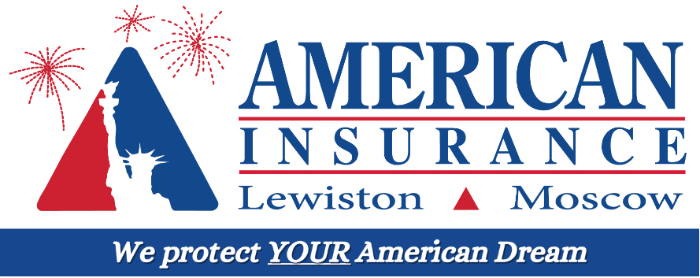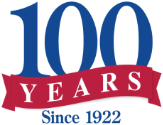Frequently Asked Questions
All You Ever Wanted to Know About Insurance
General Questions: History
History - Founder OM Mackey
SIDE-BY-SIDE: American Insurance & American Bank
American Insurance and American Bank had an interconnected relationship beginning in the 1920s and was maintained until 1955. To understand why that relationship made perfect sense and was enduring, we need to review some history and set the economic stage….
ADDING FUEL & GREASE
The modern Industrial Revolution was in full swing by the 1920s.

Science and technology changes brought electricity, internal-combustion engines, petroleum, and steel. As those industries matured they revolutionized construction (sky scrapers, factories), transportation (automobiles, airplanes) and communications (radio, telephones) with an explosion of new inventions and innovations that were delivered to hungry consumers through the factory system using mass production.

If you would describe Capitalism as the economic engine, then Banking added the "fuel" and Insurance was the "grease" to smooth the way to our modern consumer society.
Banking loans accelerated growth by multiplying the money supply to serve more consumers and insurance allowed more consumers to qualify for loans by reducing the risk of loss to the bank and protecting the collateral from unexpected property and casualty losses.
Today, a loan is rarely made unless insurance is first purchased to protect the home, the car, the commercial building, business inventory or any consumer product that is used as collateral.
BANKING AND INSURANCE
SIDE-BY-SIDE
In the 1920s US banking and insurance were rapidly growing industries that complimented each other and were largely unregulated. When the American Bank and Trust Co. was founded by O.M. Mackey and A.L. Lyons in 1920 in Lewiston, it was natural to then found American Insurance and Loan Co. in 1922 to provide insurance to add security to the loans being made. That dynamic connection that began in 1922 between the American Bank & Trust Co. and American Insurance & Loan Co. was not broken when American Insurance was sold in 1928 to Harry & Blanche (Sullivan) Christy.


Not only did the two businesses operate side-by-side in the same building at 9th and Main in Lewiston, but they had common ownership. The bank referred customers to the insurance side for life insurance, fire insurance for homes and commercial buildings, crop insurance, business insurance to cover stock, inventory and liability exposures, fidelity and contract bonds. In the early days, bank loans even required that insurance be purchased.

It is more accurate to say that on August 15, 1928 Harry and Blanche Christy purchased “an interest” in American Insurance and Loan Co (see Corp Meeting Minutes). In the beginning, rather than a full purchase, the Christy’s purchased 10 shares from AL Lyons, Jr (a minority stock interest) in American Insurance and Harry assumed the role Secretary-Treasurer and General Manager. AL Lyons Jr, the son of American Bank co-founder, AL Lyons Sr, would devote his full-time attention as Executive VP at American Bank. While the American Bank primarily made secured building loans, Harry Christy made personal and consumer type loans along with insurance of all kinds. Blanche Christy provided the needed clerical work. Harry always referred to himself as “Manager” in newspaper advertising.
THE GREAT DEPRESSION

When the US stock market crashed in 1929, fueled by frenzied speculation on margin (borrowed money), it led to a cascade of financial failures of individuals, businesses and banks.
The Great Depression persisted throughout the 1930s prompting new legislation to more strictly regulate finance, banks and insurance. In 1933, the Glass-Steagall Act created a firewall between investment banking and commercial banking. The Securities Exchange Commission (SEC) emerged in 1934 as the watchdog agency for securities markets. Later, in 1945, the McCarran Ferguson Act was passed by Congress essentially allowed insurance to be regulated by states which created state departments of insurance and state laws regulating all aspects of insurance. Over time, the complexity of these and other regulations started breaking the tight connections allowed between banks and insurance.
The American Bank & Trust Co. was one of only two independent Idaho banks to survive the Depression with minimal damage. American Insurance also remained strong during the depression years.

In an effort to reassure the public in 1938 at the depths of the depression, American Insurance ran a newspaper ad featuring the strength and stability of the financial strong insurance companies they represented to the public.
Beginning in the 1920s banks began expanding their loan services to include consumer loans and offering installment payment plans to purchase cars, furniture, washing machines, vacuum cleaners and the like. This trend plus more strict consumer credit regulations gradually diminished the type of loans done by Christy and he finally stopped his loan activities by 1950.
DYNAMIC RELATIONSHIP CONTINUED

The dynamic relationship between the American Bank and American Insurance continued from 1922 until 1955, when the bank was sold to First Security Bank. Up until 1949 OM Mackey served as President and Harry W. Christy as Secretary-Treasurer and Manager of American Insurance (even after Christy’s stock ownership shifted to the majority shares). It was not until May 6, 1949 at a special stockholder meeting, that OM Mackey (age 65) resigned as President and sold his interest in American Insurance to Christy. Christy became President, Treasurer and Manager with 32 of 50 shares and Christy’s nephew, Frank W. Sullivan was named Secretary and Assistant Manager (see Corp Meeting Minutes).

Over the next five years, OM Mackey focused on cashing-in on the growth and success of the American Bank & Trust Co. He found the right buyer in First Security Bank, a regional bank that consisted of more than 50 banking offices in the Intermountain west with total resources in excess of $400 million. The American Bank was sold in September 1955 and transitioned to the First Security Bank name on September 30, 1957.
Even after the sale and the common ownership was ended, First Security Bank referred customers regularly for insurance to American Insurance. This gradually diminished until the relationship was completely severed when First Security Bank sold to Wells Fargo Bank in 2000.


